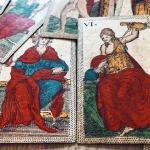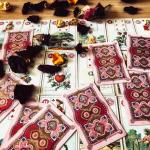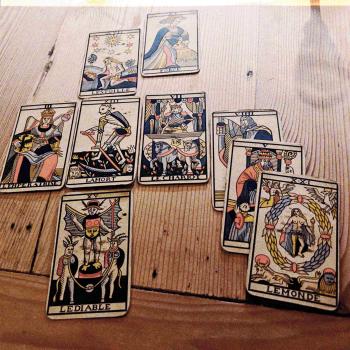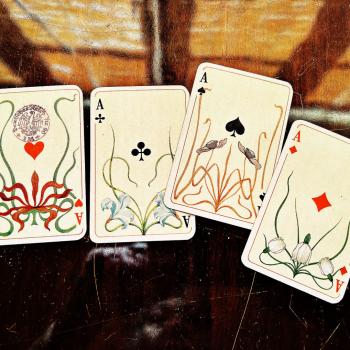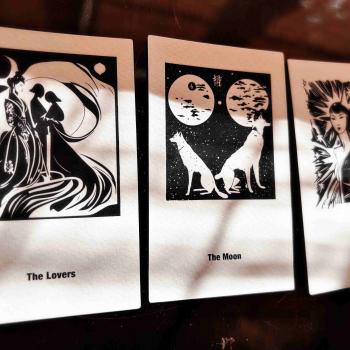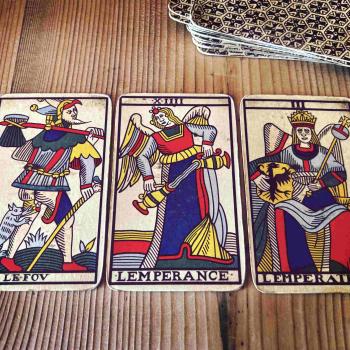
Last week I started a series of essays on Cards and Magic featuring the oldest cards I possess. The idea is to introduce you to how you can perform magic with old cards, and why this is clever fun.
I say ‘clever fun’, as this is part of my martial arts approach to cartomancy that’s all about thinking with and about the cards, rather than just use catalogues of random meanings found in both old grimoires and new books. To be sure, I like them all, the lists, that is, but I like infinitely more the stuff I can think about for myself.
Some who follow my work are familiar with the Carolus Zoya cards that I used for two of my divination books, the Marseille Tarot: Towards the Art of Reading, and The Oracle Travels Light.
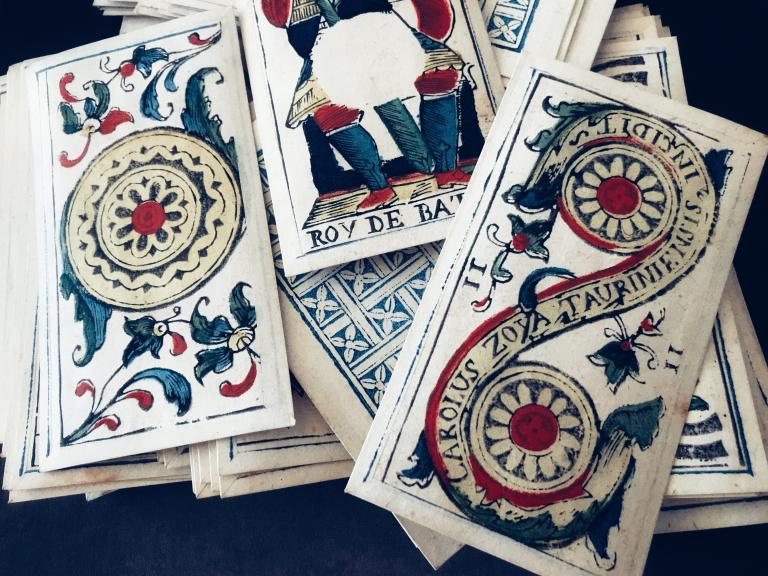
The Carolus Zoya cards are now in my possession by a twist of fate. I’m happy to be the guardian of this deck, unique and singular in the world.
Let’s see what we can do with them, magically speaking.
This practice is inspired by conflating the strange card of the King of Batons that features his belly as an empty round shape (originally intended for stamping) with a Sumerian tale.
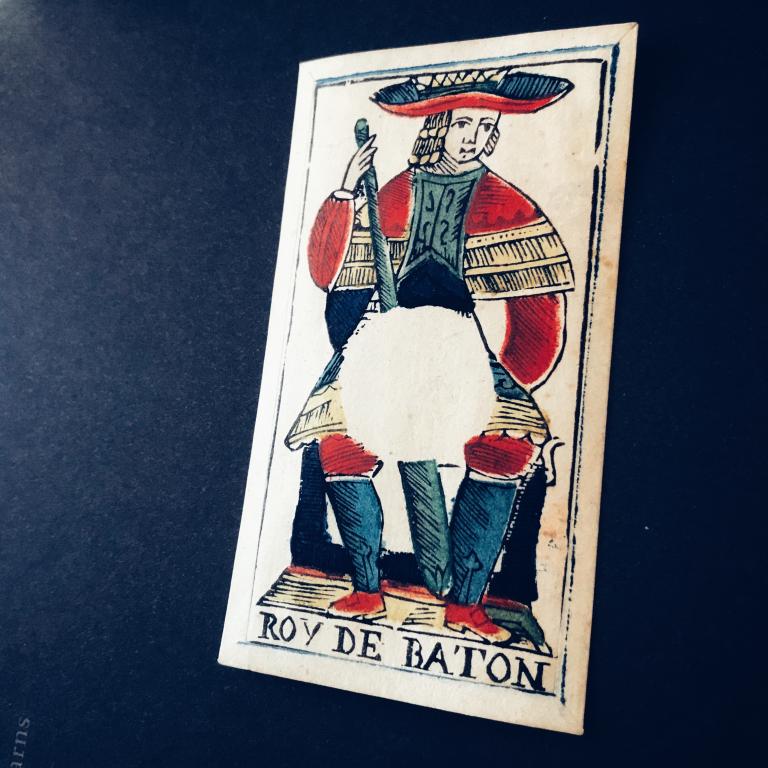
As this deck escaped stamping, and hence taxation, I find it fascinating for its ‘transgressive’ power.
As I contemplated on what to invent as a magic practice, I thought about the Epic of Gilgamesh.
Looking at the King of Batons’ zero, I thought about the drum and drumstick that Gilgamesh received from Inanna as a gift that he managed to lose to the underworld.
By some critical history accounts, Gilgamesh was a terrible shaman, and I like the best the suggestion that my fellow countrymen and famed professor of the history of religion, Ioan Couliano, advances, namely that he was a reckless shaman who didn’t learn a thing from his shaman predecessors, and in the process of attaining immortality paying all sorts of prices for his shallow thinking (Out of This World, 1991)
Couliano himself had a terrible fate, having been killed in 1991 in plain daylight in the bathroom of the department that he chaired, the Divinity School of Chicago University. Since to this day no one knows who did it and why, this crime has remained ‘unsolved’. I asked the cards about it once, and the Empress came up. As they say, cherchez la femme…
Back to my magic.
In the Gilgamesh story, written on tablet 12 of the epic, Gilgamesh sends Enkidu to retrieve the drum and the drumstick. Enkidu fails and it falls upon Nergal, a heavenly god who became the husband of Ereshkigal, who was the queen of the netherworld, to do the job. He opens a hole in the earth, and the story tells us that Enkidu’s soul trapped in hell was able to slip out immediately.
The question that remains is to what extent the precious, magic gifts from Inanna were also retrieved through this hole.
Inspired by this story and the fact that since the Chaldeans, the Sumerian-Akkadian-Assyrian-Babylonian civilization drew on the spiral for for magical and divination purpose, I thought I’d offer this with my Carolus Zoya cards that date back to ca. 1780.
Dark Treasures
Take the oldest cards you have – it doesn’t matter is they’re only as old as 2 months – and take out the card that features a round shape similar to a hole. This can be the Ace of Coins, or some other card that has a stamp on it.
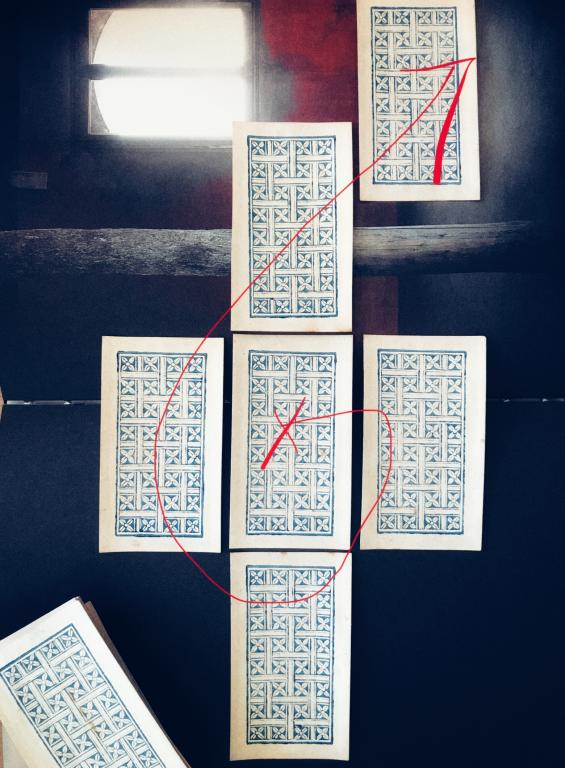
Place it on your table face up (here marked with an x).
Then take your deck and shuffle the remaining cards.
Ask this question:
What are my dark treasures, and how can I retrieve them from the underworld?
Now cut the shuffled deck and take 5 cards from the top of the cut that you arrange in a spiral around the significator card.
If you have a shamanic drum, take it out and start beating it. Pay attention to the undertones, and while you do that, look at your cards too.
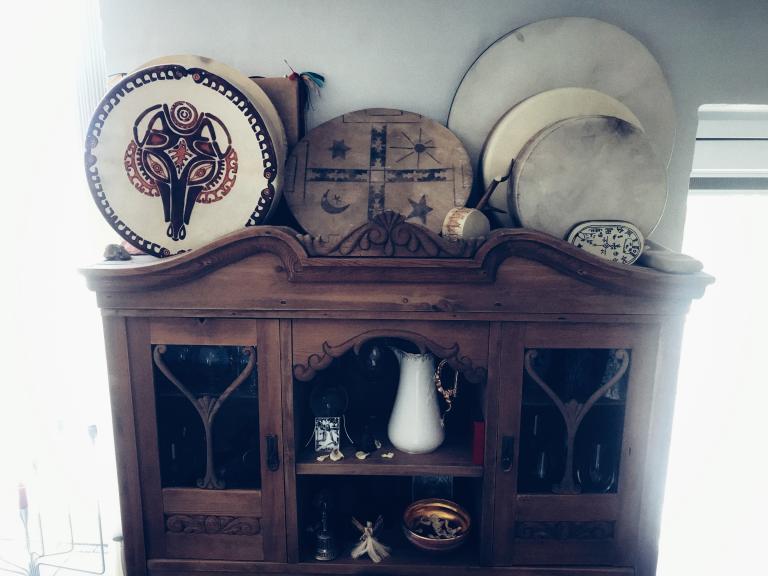
If you don’t have a drum, bang on anything that can create resonance.
A good shamanic drum will give you a distinct sound for upper and under tones.
Read the cards in line with these tones in mind, as you will use the same line for a double purpose: 1) to identify your dark treasures and 2) to identify the path it takes to get them out of the underworld, with the last card here as the one you’ll keep your eyes on, the one that will get you out of the hole:
For instance:
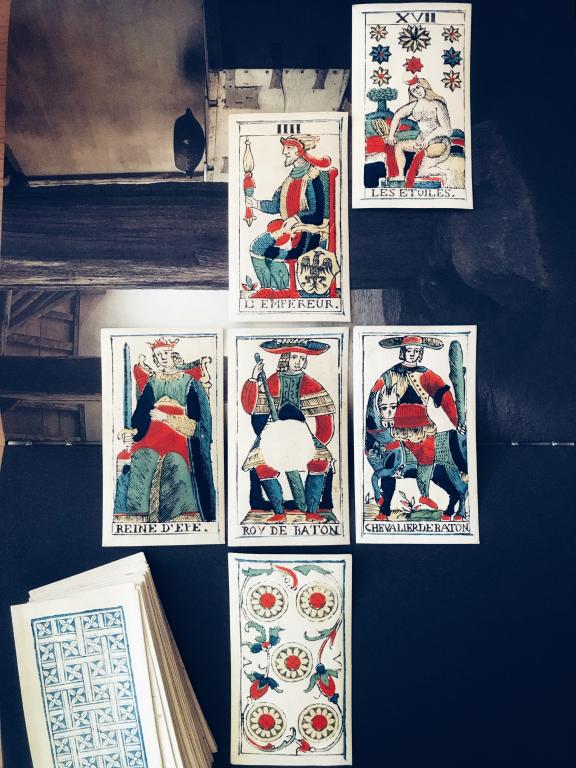
My treasures are: 1 stick, 5 drums, 1 sword, and 1 emblem. My eyes are on the Star. The path is one of action, paying dues, stabbing, and being taking command. My lucky star approves.
You’re welcome to contemplate some more on your own cards, beyond their literal signification and function.
For a reading like the devil, I suggest you follow the simple formula: function of what’s depicted on the card + context – or what you have in mind with why you’d be interested in retrieving your dark treasures.
Good luck and keep going.
♠
Stay tuned for cartomancy courses. By popular demand, a revamped Cards and Magic 3.0 will come back, around April next year (with other activities in between, announced via the Art of Reading newsletter).


